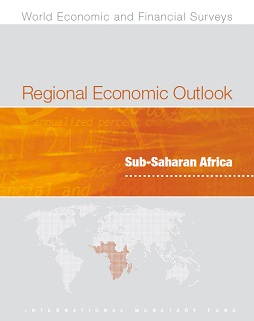
Sub-Saharan Africa
Regional Economic Outlook: Fiscal Adjustment and Economic Diversification
October 2017
Full Text Country Focus Podcast
The broad-based slowdown in sub-Saharan Africa is easing but the underlying situation remains difficult. Growth is expected to reach 2.6 percent in 2017, but the pickup reflects one-off factors, notably a recovery in oil production in Nigeria and the easing of drought conditions in eastern and southern Africa. While a third of the countries in the region continue to grow at 5 percent or more, 12 countries home to 40 percent of the region’s population are expected to see per capita income decline. The external environment has improved somewhat, facilitating sovereign bond issuances by the region’s frontier economies. Foreign exchange market pressures appear to have abated, but international reserves remain low in many countries. Public debt has been rising rapidly across the region, including in the fast-growing economies. In this context, implementing the planned fiscal consolidations and reforms to tackle constraints on growth are the key policy priorities.
Chapter 1 - The Quest for Recovery
The broad-based slowdown in sub-Saharan Africa is easing, but the underlying situation remains difficult. Growth is expected to pick up from 1.4 percent in 2016 to 2.6 percent in 2017, reflecting one off factors—particularly, the rebound in Nigeria’s oil and agricultural production, the easing of drought conditions that impacted much of eastern and southern Africa in 2016 and early 2017—and a more supportive external environment. While 15 out of 45 countries continue to grow at 5 percent or faster, growth in the region as a whole will barely surpass the rate of population growth, and in 12 countries, comprising over 40 percent of sub-Saharan Africa’s population, income per capita is expected to decline in 2017.
Chapter 2 - The Impact of Fiscal Consolidation on Growth in Sub-Saharan Africa
Many sub-Saharan African countries are facing a period of fiscal consolidation in order to ensure macroeconomic stability and sustainable growth. For the resource-intensive countries hit hard by the commodity price collapse, fiscal consolidation is urgent to offset likely permanent revenue losses. For other countries, especially those still growing fast, there may be less urgency for fiscal consolidation, but many have seen buffers eroded, and public debt and borrowing costs are on the rise.
Chapter 3 - Economic Diversification in Sub-Saharan Africa
Sub-Saharan Africa has made great strides over the past two decades, with high growth rates and significant progress on social indicators, driven by improvements in policy frameworks but also favorable commodity prices and financing conditions. However, in contrast to growth spurts seen in other regions, the growth acceleration in the region has not been driven by an expanding manufacturing sector. Moreover, growth spells in sub-Saharan Africa have been shorter than elsewhere (IMF 2017c) and, in some countries, conflict has slowed or reversed progress on economic diversification.


